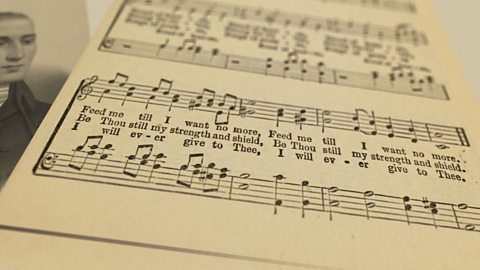What is an empire?
An empire is a collection of countries or territoryPiece of land ruled by a country or government. ruled by one monarch. The territories that make up an empire are often seized by conquestThe act of taking control over a country or territory. or wars. The British Empire influenced the people living in those countries, impacting their customs, language, politics, laws and culture.
The British Empire
The foundation of the British Empire began in the 16th and 17th centuries - the ‘age of discovery’. During Elizabeth I’s reign, Humphrey Gilbert discovered Newfoundland and claimed it for England. Gilbert was an adventurer, explorer and Member of Parliament who lived between 1539-83. His half-brother, Walter Raleigh continued to explore and discovered Roanoke Island, which is now part of North Carolina.
The empire developed further during the reign of James VI, as territories in North America and the Caribbean became part of Britain. Britain was eager to benefit economically from the resources available oversees and extend their influence over the world. The East India Company in the 17th century was an example of this. This company was founded in 1600 to trade with south east Asian territories. The British Empire continued to grow and by 1913, 412 million people lived in the empire, which was 23 per cent of the entire world’s population.
Video - Empire
An empire, what is it exactly? It’s a group of countries ruled by a single monarch. In Britain’s case, the mother country, ruled other countries and territories from Britain under one ruler.
From the 16th century onwards, Britain began to build an empire across the world. By the 1750s, there were British colonies across North America and the West Indies.
By 1900, Britain was in control of almost a quarter of the world through trade, war and land occupation. Let’s take a closer look.
Most Britons at the time thought they were exporting a belief system of culture, religion and morality as well as a thriving economy - including railways and shipping goods across the world.
However, despite these beliefs and technologies, many people suffered under British rule. They were expanding their power and culture instead of nurturing existing cultures. For example, in Australia, the occupation of Aboriginal land and resources resulted in the starvation of the indigenous people.
It also involved the exploitation of human labour, which is called slavery. Why were Wales and Britain involved with slavery? Unfortunately, like most things in the world, it boils down to money.
They played a huge part in selling millions of African people as enslaved labour to places like the Americas. Also, the Spanish, Portuguese and French colonies that were set up in Africa enabled the British to contribute significantly to the slave trade.
Here are some of the Welsh people who were involved in slavery.
The Cunliffe family from Wrexham. They transported enslaved people from Africa to the Americas in their ships. In the 1750s they ran the largest slave-trading business in Liverpool.
Then there was the Pennant family. Richard Pennant made a fortune from slave plantations in Jamaica which helped him develop the slate industry and build Penrhyn Castle, near Bangor.
Sir Thomas Picton, from Haverfordwest was once the governor of Trinidad. He was a brutal ruler who tortured and imprisoned 14-year-old Louisa Calderon when she was accused of stealing money.
He was the highest-ranking officer to be killed at the Battle of Waterloo and he’s the only Welshman to be buried in St Paul’s Cathedral. At the time he was regarded as a hero, but these days he's a controversial figure because of his links to slavery, and some people are unhappy that he was commemorated with statues and memorials.
But not everyone agreed with slavery. Some Welsh people thought it was immoral, sinful and a way of exploiting others and they wanted to abolish it. Like William Williams, Pantycelyn, famous for writing the lyrics to the Welsh hymn Guide me o, thou great redeemer.
Although empires can make their owners extremely rich and powerful there’s often a human cost to be paid by others.And while there are no empires in the world today, we can still see the effects of the ones that have disappeared.
The slave trade
Huge ships were used to transport enslaved people from Africa to the Americas in terrible conditions. Over two million Africans died during the journey. The enslaved people worked on plantations growing tobacco, rice and sugar, and were treated brutally.
Profits made by trading enslaved people provided money for investment in British industry and made cities such as London very wealthy.
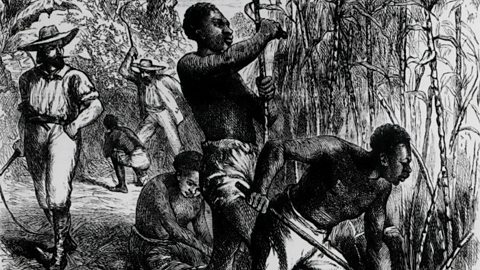
Richard Pennant
Richard Pennant, or Lord Penrhyn, was a politician who owned a number of slate quarries in north Wales. The family also owned six sugar plantations in Jamaica. He used the profits he made in these plantations to develop his slate quarries, as well as building Penrhyn Castle as a symbol of his wealth. In his role as Member of Parliament for Liverpool, Richard Pennant argued strongly against ending the trade in enslaved people because of the money the city’s port made from this trade.
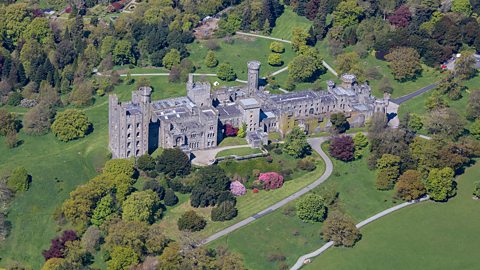
Sir Thomas Picton
Sir Thomas Picton was an army officer during the Napoleonic warsNapoleon was a French emperor (leader) between 1804 and 1815 and led France in an era of wars with other European countries.. He was killed at the Battle of Waterloo and buried at St Paul’s Cathedral, London.
During his time as the Governor of Trinidad he was well-known for his cruel treatment of enslaved people. He was found guilty of ordering the tortureAbuse or punishment by violence. of a 14-year-old girl. In 2020, Cardiff Council voted to take down a statue of Picton at City Hall and the Museum of Wales decided to move his portrait from public view.
The Bacon family
The Cyfarthfa Ironworks in Merthyr were founded by Anthony Bacon in 1765. Anthony Bacon owned ships that were used to transport enslaved people from Africa to the Caribbean. The money was subsequently invested in the Ironworks.
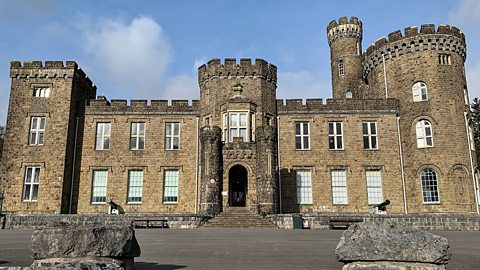
There is evidence that iron from the works was used to create cannonballs for ships used in the slave trade and ships used by the East India Company. Although this is not a direct link, Cyfarthfa castle in Merthyr is evidence of the profit made from slavery.
Welsh people opposed to the trade
William Williams, Pantycelyn
William Williams is considered one of Wales’ foremost hymn writers having written some of the Welsh language’s most important hymns during the 18th century. He also spoke up against the slave trade. In 1792, Williams was one of the first Welshmen to publish a leaflet opposing the slave trade. He also translated the life stories of many enslaved people’s to draw attention to the cruelty of the trade.
Iolo Morganwg
Another Welshman who spoke up against slavery was the founder of the Gorsedd of the BardsSociety of poets, authors and musicians established by Iolo Morganwg in 1792., Iolo Morganwg. He had a shop in Cowbridge and tried to avoid selling anything linked to slavery. Despite this, two of Iolo’s brothers were involved with a sugar plantation in Jamaica and owned 240 enslaved people. When he faced a period of poverty, he refused money from his brothers to help him, although he eventually agreed to accept it.
How did the slave trade end?
From the 1770s in Britain, a movement developed to bring the slave trade to an end. This was known as the abolitionist movement. The work of politicians, ordinary workers, women and the testimonies of formerly enslaved people all contributed to the British abolitionist movement.
Politicians such as Thomas Clarkson and Granville Sharp were leading abolitionists. In 1787, they established the Society for Effecting the Abolition of the Slave Trade, whose purpose was to campaign for the slave trade to be brought to an end. William Wilberforce was a member of parliament who began to introduce anti-slavery motions in Parliament from 1789 onwards.
The Quakers strongly opposed the slave trade in Britain and America.
Working-class people in Britain played a key role - over 500 petitionDocument asking for change, signed by many people., with a combined total of around 390,000 signatures, were submitted in support of Wilberforce’s abolition bill in 1792.
Formerly enslaved people such as Olaudah Equiano, Ottobah Cugoano and Phillis Wheatley campaigned for the abolition of the slave trade – they formed societies, shared their stories and petitioned Parliament.
Enslaved people found ways to demonstrate their resistance - the successful revolts by enslaved people in Barbados, Jamaica and Demerara shocked the British Government.
Many people, most of whom were women, became involved in the boycotting of sugar and other goods produced using enslaved labour.
Abolition of the Slave Trade Act 1807
In 1807, the British Parliament passed the Abolition of the Slave Trade Act. This ended the buying and selling of enslaved people within the British Empire, but it did not protect those already enslaved. Many enslavers continued to trade illegally.
Slavery Abolition Act 1833
The abolition of enslavement in the British Empire was not wholly achieved until the Slavery Abolition Act 1833. Plantation owners across the British Empire received a share of £20 million, around £17 billion in today's money, in compensation. In contrast, the newly freed people received no compensation.
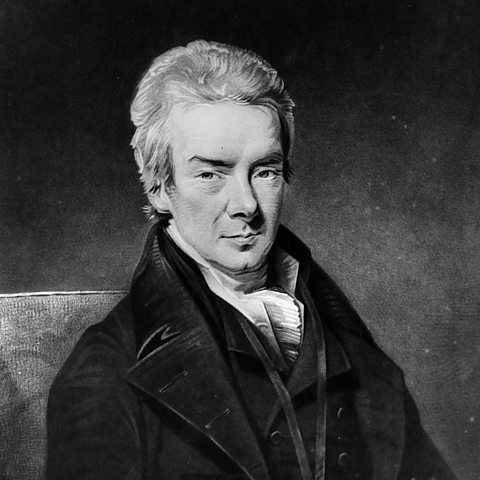
Quiz - Empire
More on Identity
Find out more by working through a topic
- count1 of 2
